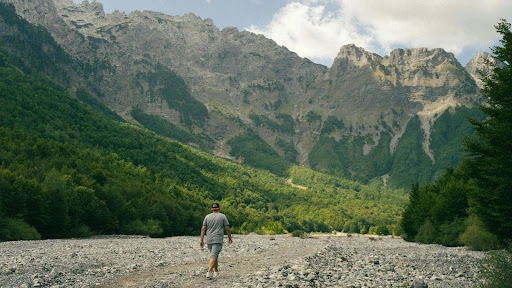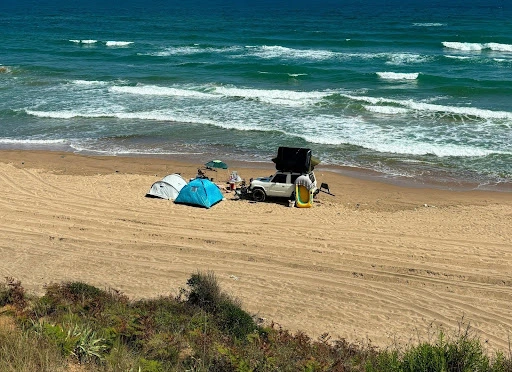Table of Contents
Nature’s Call: Pooping in the Woods
Whether you’re a seasoned hiker, weekend camper, or just love the outdoors, let’s talk about something important—how to poop in the woods. Yes, really. It’s not often discussed but crucial for anyone away from modern comforts.
Most people either don’t know how to poop in the woods or are too shy to do so, which is understandable. But knowing HOW to do it will help you in emergency bathroom situations in the woods. This guide covers everything you need to know about handling nature’s call responsibly and with minimal mess.
What to Consider Before Nature Calls
Before you even set out on your adventure, it’s a good idea to think about your bathroom breaks. One of the first things to consider is the duration of your trip. Are you heading out for a few hours, a day, or multiple days? The longer you’re out, the more likely you’ll have to take care of business in the wild.
Hydration and food consumption play significant roles in this planning. Staying hydrated is essential, especially when you’re hiking or camping. However, it also means you’ll need to pee more frequently. Similarly, the type of food you eat can affect your bowel movements. High-fiber foods might speed things up, while more processed snacks might slow things down.
One of the main things to be aware of is the regulations and guidelines for the specific area you’re visiting. Some parks and natural reserves have strict rules about waste disposal. It will more than likely be illegal to poop in the woods of these areas so avoid that. Ensure you are on public land to prevent any potential issues
The Art of Finding the Perfect Spot
Once you’re out on the trail, finding the right spot to relieve yourself is an art. The first rule is to move at least 200 feet away from any water sources, trails, or campsites. This distance helps prevent contamination and keeps the experience pleasant for other adventurers. Nobody wants to step in your dookie.
Look for a location where the soil is rich and easy to dig into. Avoid rocky or sandy areas as they won’t provide adequate cover. Dense vegetation can offer some much-needed privacy, but be mindful of insects that may be lurking.
Another tip is to find a spot with a good vantage point. This isn’t just about the view (though that’s a bonus); it’s about being able to see if anyone is approaching. A little foresight can save you from an awkward encounter.
How to Properly Dig a Cat Hole
A cat hole is essentially a hole where you will do the deed. And is the most recommended method for disposing of human waste in the wilderness, aside from bagging it out. Here’s how to do it:
- Choose Your Spot – Select a location that meets the criteria mentioned above. Ensure you’re at least 200 feet away from water, trails, and campsites.
- Get the Right Tools – A small trowel or shovel is ideal for digging a cat hole. If you don’t have one, a sturdy stick can work in a pinch.
- Dig the Hole – Aim for a hole that’s 6 to 8 inches deep and about 4 to 6 inches in diameter. This depth ensures that your waste decomposes efficiently while keeping animals from digging it up… and so you don’t miss the hole.
- Do Your Business – Once the hole is ready, go ahead and relieve yourself. Take your time and try to relax—you’re in nature, after all! If there are mosquitos about then you more than likely will be swatting them away at some point.
- Cover and Camouflage – After you’re done, cover the hole with the soil you removed, then camouflage it with leaves, sticks, or whatever natural debris is around. The goal is to leave no trace that you were there.
Cleaning Up Properly
Cleaning up after yourself is just as important as finding the right spot and digging a proper hole. Start by using biodegradable toilet paper or natural materials like leaves or snow if it’s winter. Be selective with leaves, though—some can irritate.
Don’t use leaves from plants like plantain or materials like birch bark. These items tend to smear rather than wipe.
Always pack out used toilet paper in a sealed plastic bag. This might seem like a hassle, but it’s crucial for keeping the environment clean. Some hikers even carry a small container specifically for this purpose, lined with a trash bag for easy disposal later.
Hand sanitizer is a must-have in your hygiene kit. After cleaning up, use a generous amount to sanitize your hands. If you have access to water and biodegradable soap, even better.
The Dos and Don’ts of Dealing with Toilet Paper
While digging a cat hole is a great method, sometimes packing out your waste is necessary, especially in sensitive environments like alpine or desert areas.
Do Use WAG Bags – Waste Alleviation and Gelling (WAG) bags are a convenient and hygienic way to pack out your waste. They contain a gel that neutralizes odors and makes disposal easy.
Don’t Leave Toilet Paper – Even if it’s biodegradable, toilet paper takes time to decompose and can be unsightly. Always pack it out. Nobody wants to see your Charmin blossoms in the winter.
Do Double-Bag – For extra security, double-bag your waste. This helps prevent leaks and contains any odors, making it easier to carry until you find a proper disposal site. It’s not rocket science but if you haven’t done it before then you might not think of these things.
Other Methods of Pooping in the Woods
The cat hole method isn’t the only way to poop in the woods. There are other options for those who may not be able to squat down for some reason or another. Here are some other ways to manage pooping in the woods.
Bucket with a Bag and Pool Noodle
If you prefer a more comfortable setup, consider using a bucket with a bag and a pool noodle. Cut the pool noodle lengthwise and fit it around the rim of the bucket for a cushioned seat. Line the bucket with a heavy-duty trash bag, and you’re good to go. This method is especially useful for car camping or multi-day trips where you have more room to carry gear. Just don’t leave it at the campsite for someone else to clean up.
Thunder Buckets (Poop Boxes)
Thunder buckets, also known as poop boxes, are another option. These portable toilets are designed for easy use and cleanup. They are often found in remote campsites in parks that offer that kind of camping. Be sure to brush away any spiders that may be lurking in the box!
Portable Toilet Seats
For those who want to combine convenience with a touch of comfort, portable toilet seats are available. These seats fold up for easy transport and can be placed over a dug hole or used with a bag system. They’re a bit more luxurious than squatting and can make the experience more pleasant.
Final Thoughts
Answering nature’s call in the wild doesn’t have to be a daunting task. With a little planning and the right techniques, you can handle it like a pro while respecting the environment. Always remember the principles of Leave No Trace, and make an effort to keep our trails and campsites pristine













